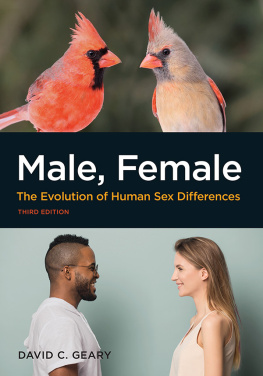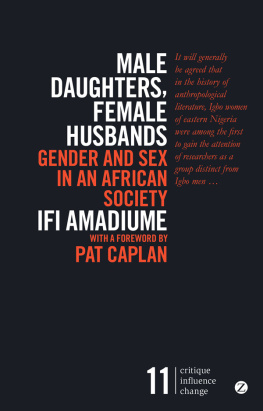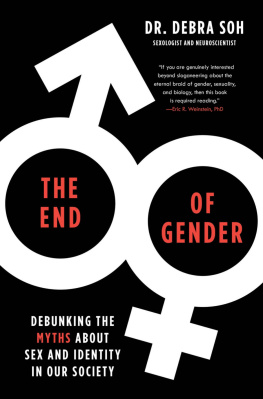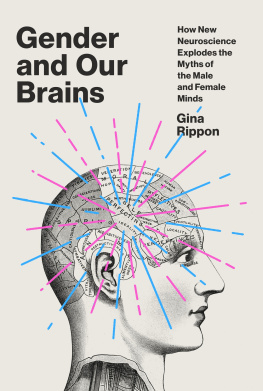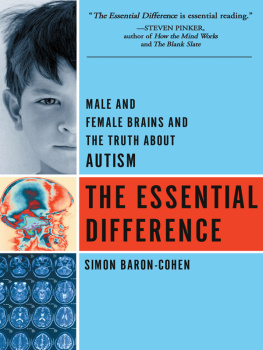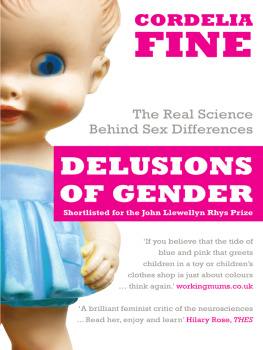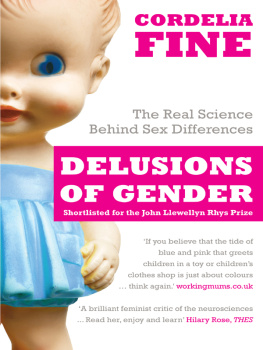
Copyright 2019 by Daphna Joel PhD and Luba Vikhanski
Cover design by Lauren Harms
Cover 2019 Hachette Book Group, Inc.
Author photographs by Gal Hermoni (Joel) and Arnon de Shalit (Vikhanski)
Hachette Book Group supports the right to free expression and the value of copyright. The purpose of copyright is to encourage writers and artists to produce the creative works that enrich our culture.
The scanning, uploading, and distribution of this book without permission is a theft of the authors intellectual property. If you would like permission to use material from the book (other than for review purposes), please contact permissions@hbgusa.com. Thank you for your support of the authors rights.
Little, Brown Spark
Hachette Book Group
1290 Avenue of the Americas, New York, NY 10104
littlebrownspark.com
twitter.com/lbsparkbooks
facebook.com/littlebrownspark/
First ebook edition: September 2019
Little, Brown Spark is an imprint of Little, Brown and Company, a division of Hachette Book Group, Inc. The Little, Brown Spark name and logo are trademarks of Hachette Book Group, Inc.
The publisher is not responsible for websites (or their content) that are not owned by the publisher.
The Hachette Speakers Bureau provides a wide range of authors for speaking events. To find out more, go to hachettespeakersbureau.com or call (866) 376-6591.
ISBN 978-0-316-53462-8
E3-20190827-DA-NF-ORI
To our mothers
Explore book giveaways, sneak peeks, deals, and more.
Tap here to learn more.

O ne summer morning over ten years ago I was home with my three kids when I heard the hissing of a burst water pipe outside my apartment building. Holding my youngest, then still a baby, in my arms, I rushed to the yard, bent the end of the gushing rubber pipe from an automatic garden-watering system to stop the water running, and asked my two older kids to call a friend who lived next door. When my friend arrived, I assumed hed take care of the situation. But he just stood there, obviously at a loss. Only then did it dawn on me that he was just as clueless about plumbing as I was. I asked him to hold the folded pipeand the babyand went looking for the main faucet so I could shut off the water.
It had taken the bewildered look on my friends face for me to become aware of my own bias. I must admit I was embarrassed. I had always believed in equality between the sexes, and I thought I was running my life accordingly. Yet here I was, expecting a man to handle a technical emergency.
Just around that time, I received an excellent opportunity to explore in depth my own and other peoples gender biases: a colleague asked me to take over a course on the psychology of gender she had been teaching at Tel Aviv University. To prepare, I spent a year reading books and scientific articles on the development of women and men from the moment of conception. As a neuroscientist, I was most interested in the relationship between sex and the brain.
I soon learned that many scientists, just like many others, believe that the brains of females and males differ in profound and important ways, and that this is the reason for fundamental differences between women and men in almost every domain, from cognitive and emotional abilities, through interests and preferences, to behaviors. Self-help books that try to teach us how to cope and communicate with the other sex tend to take this belief as a given.
According to a popular version of the story, the female brain has a large communication center and a large emotion center, and is hardwired for empathy. The male brain, on the other hand, has a large sex center and a large aggression center, and is hardwired for building systems.
This story seems to provide us with a neat biological explanation for much of what we encounter in day-to-day life. It explains why women are more sensitive and emotional, whereas men are more aggressive and sexual; why most teachers are women, and most engineers, men.
Its the hormones, stupid, we are told. In the womb, the story goes, a huge surge of testosterone, secreted by the testes of the male fetus, changes his brain from the default female to male. So girls are born with a female brain and boys with a male brain. The details of the rest of the story vary among different authors, but they all explain why women and men behave in the ways depicted by popular gender stereotypes. Girls are nice and empathic, and boys are active and aggressivebecause this or that region in the brains of girls is smaller or larger than in boys, or because they have more or less of this or that hormone.
There are no surprises. No matter what the findings are, they are never interpreted in a way that would run counter to prevalent gender stereotypes. For example, the amygdala, a brain region central to emotions, was for many years considered to be, on average, larger in males than in females, yet no one ever claimed that based on the size of their amygdalae, men were, by nature, the more emotional sex. (Recent statistical analyses have shown that, in fact, there is no difference between the sexes in the average size of this brain region.)
The concept of a male brain and a female brain fits well the popular view that men and women come from different planets, but does it fit the scientific evidence? My own attempt to answer this question began with a startling study I encountered about a decade ago while preparing to teach the psychology of gender course.
Did you know that thirty minutes of stress is enough to change the sex of some brain regions from male to female, or vice versa? I hadnt known this either. Reading about this study led me to several years of extensive research, which completely transformed the way I thought about sex, gender, and the brain.
After analyzing hundreds of brain scans, I realized that sex differences in the brain do not consistently add up in individuals to create male and female brains. Note that Im not saying there are no differences between the brains of females and males; on the contrary, my team has documented many such differences, as have numerous other scientists. What Im arguing is that these differences mix together in each individual brain to create a unique mosaic of features, some of which are more common in females and others are more common in males. This notion goes hand in hand with what Im sure many people already know: we are all patchworks of feminine and masculine traits. But it goes further; it suggests that there is no such thing as a male or female brainor a male or female nature.
Before I describe how I arrived at the brain mosaic idea and what its implications might be, let me share with you a few intriguing facts about the brains of females and males, and how the perception of these facts has changed over the past few centuries.
W hen egalitarian ideas started circulating prominently in Europe in the seventeenth and eighteenth centuries, men faced an embarrassing dilemma. The new principles implied that all humans, women and men, were by nature equal. This notion threatened the existing social order, in which women played subordinate roles. The fear was that equality would undermine the very foundations of societymost important, that given equal status, women would stop serving men.
Molire satirized these fears in his 1672 comedy Les Femmes savantes, in which the husband rails against his wife and other science-minded women, who neglect their domestic duties: They want to write and become authors. No science is too deep for them They know the motions of the moon, the pole star, Venus, Saturn and Mars and my food, which I need, is neglected.




